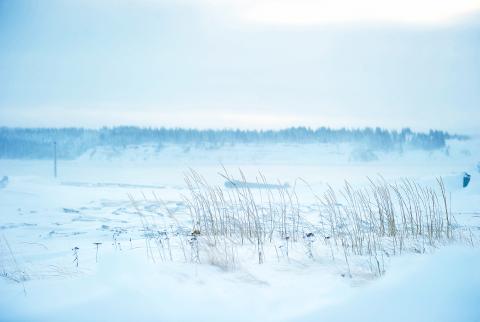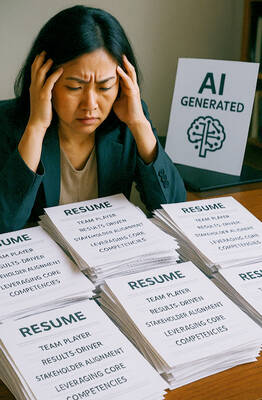Global targets aimed at warding off runaway planetary warming could be breached sooner than expected, experts warned Monday, as gases released by melting permafrost threaten to undermine human efforts to avert climate disaster.
Under the current rescue plan, outlined in the 2015 Paris climate treaty, countries have agreed to limit global temperature rises to “well below” two degrees Celsius, and 1.5 degrees if deemed possible. That course of action assumes that dealing with manmade greenhouse gases — whether by slowing their emissions or removing them from the atmosphere — will be enough to bring global warming under control.
What climate models do not allow for are scenarios in which Earth begins to contribute to the problem, new research shows. A team of experts from the International Institute for Applied Systems Analysis (IIASA) in Austria said Monday they had for the first time included projected emissions from melting permafrost in global climate change models, and the results prompted concern. “Permafrost carbon release is caused by global warming, and will certainly diminish the budget of CO2 we can emit while staying below a certain level of global warming,” said IIASA research scholar and lead study author Thomas Gasser.

Photo: AFP
照片:法新社
As reliance on fossil fuels persists, scientists have calculated that we are likely to overshoot the Paris temperature targets in the short to medium term. With only one degree of warming above pre-industrial levels so far, the world’s permafrost is already thawing, albeit slowly. But the rate of that melting is sure to accelerate as Earth continues to heat up.
Gasser warned that the overshoot scenario would leave the planet even more vulnerable to permafrost emissions and, in a vicious feedback loop, even more warming. In fact, under some models run in the study, published in the journal Nature Geoscience, we have already missed the 1.5 degrees target as a result of permafrost emissions.
Methane and CO2 trapped in the frozen wastes of Russia, Canada and northern Europe are roughly equivalent to 15 years of manmade emissions at today’s level. The problem with the Paris goals, according to Gasser, is that they set emissions targets based on the assumption that global temperature and atmospheric CO2 levels change in lock-step. They therefore allow countries to exceed the targets on the condition that enough carbon can be captured from the air to bring temperatures back down by the end of the century.
But permafrost is subject to what scientists call a “tipping point,” meaning that beyond a certain temperature threshold, it will continue to melt and release greenhouse gases in a self-perpetuating feedback loop independent of falling emission levels. The models will not have accounted for these additional greenhouse gases, mainly methane and carbon dioxide.
As the world struggles to curb manmade carbon pollution that amplifies the likelihood and intensity of deadly superstorms, heatwaves and droughts, Monday’s study will add to fears that Earth itself could overwhelm efforts to limit climate change. Other possible climate tipping points include melting sea ice, which creates seawater that absorbs rather than reflects sunlight, and forest dieback — which would see billions of tonnes of carbon released as CO2-absorbing biomass is lost.
(AFP)
正當全球設定目標,企圖遏止失控的地球暖化,專家週一發布警示,指出該目標可能比預期還要快遭到破壞,因為融化的永凍層釋放出氣體,可能暗中威脅人類為防止氣候災害所做的努力。
眼下的拯救計畫乃按照二○一五年的巴黎氣候協定,世界各國同意限制全球氣溫升幅「遠低於」攝氏兩度,並在可能情況下控制在攝氏一點五度之內。該行動方向假定妥善處理人為排放的溫室氣體──無論是減低排放量,還是從大氣層中移除溫室氣體──將足以讓全球暖化獲得控制。
然而,新的研究顯示,這些氣候模式並未考慮到地球本身開始造成問題加劇的情況。由奧地利國際應用系統分析研究所(IIASA)專家組成的團隊於週一表示,他們首次將融化中的永凍層預期排放的氣體納入全球氣候變遷模式中,導出結果令人憂心。IIASA學者暨這份研究的主要作者托馬斯‧蓋瑟表示:「永凍層的碳排放是由全球暖化導致,而且當我們將全球暖化程度維持在特定標準以下時,這些氣體一定會縮減我們所能排放二氧化碳的容許值。」
由於人類持續仰賴化石燃料,科學家已算出我們可能會在短期或中期內超出巴黎協定的降溫目標。儘管目前的暖化升幅只比前工業化時期的標準高出攝氏一度,世界各地的永凍層早已開始解凍,只是速度還算緩慢。不過,隨著地球持續增溫,融化速度必然會加快。
蓋瑟警告,超出目標的情況會讓地球變得更為脆弱,更容易受到永凍層排放氣體,以及惡性反饋迴圈造成更嚴重暖化等現象影響。事實上,根據這篇於期刊《自然地球科學》發表的研究,在幾組運算模式中,我們早已因為永凍層排放氣體而無法達到攝氏一點五度的目標。
大量的甲烷與二氧化碳被困在俄國、加拿大、北歐地區的冰凍廢棄物中,總量約等於今日人造溫室氣體排放量的十五年份之多。根據蓋瑟的看法,巴黎協定目標的問題在於假設全球溫度和大氣層的二氧化碳濃度會同步改變,並據此設下排放目標。因此,他們允許各國超過目標,條件是這些國家要能夠從空氣中捕獲足夠的碳,讓氣溫能在這個世紀結束前回到目標值。
然而,永凍層卻是受控於科學家所稱的「臨界點」,也就是說,一旦超過特定溫度門檻,永凍層就會在自行延續的反饋迴圈中持續融化並釋放出溫室氣體,完全獨立於人類逐步降低的排放標準。先前的模式到時候將會無法解釋這些主要由甲烷與二氧化碳構成的額外溫室氣體。
人造碳汙染會增強致命超級颶風、熱浪,以及乾旱發生的可能性與災害強度,但正當世界各國奮力控制汙染的同時,週一的研究卻帶來新的恐懼,亦即地球本身可能吞沒人類遏止氣候變遷的種種努力。其他可能的氣候臨界點還包括海冰融化,製造出更多海水吸收陽光熱能,而非反射陽光,以及森林樹冠頂枯,會因為這類吸收二氧化碳的生物質量消失,而釋放出數十億噸的碳。
(台北時報章厚明譯)

In an effort to fight phone scams, British mobile phone company O2 has introduced Daisy, an AI designed to engage phone con artists in time-wasting conversations. Daisy is portrayed as a kindly British granny, exploiting scammers’ tendency to target the elderly. Her voice, based on a real grandmother’s for authenticity, adds to her credibility in the role. “O2” has distributed several dedicated phone numbers online to direct scammers to Daisy instead of actual customers. When Daisy receives a call, she translates the scammers’ spoken words into text and then responds to them accordingly through a text-to-speech system. Remarkably, Daisy

Bilingual Story is a fictionalized account. 雙語故事部分內容純屬虛構。 Emma had reviewed 41 resumes that morning. While the ATS screened out 288 unqualified, she screened for AI slop. She could spot it a mile away. She muttered AI buzzwords like curses under her breath. “Team player.” “Results-driven.” “Stakeholder alignment.” “Leveraging core competencies.” Each resume reeked of AI modeling: a cemetery of cliches, tombstones of personality. AI wasn’t just changing hiring. It was draining the humanity from it. Then she found it: a plain PDF cover letter. No template. No design flourishes. The first line read: “I once tried to automate my

Every May 1, Hawaii comes alive with Lei Day, a festival celebrating the rich culture and spirit of the islands. Initiated in 1927 by the poet Don Blanding, Lei Day began as a tribute to the Hawaiian custom of making and wearing leis. The idea was quickly adopted and officially recognized as a holiday in 1929, and leis have since become a symbol of local pride and cultural preservation. In Hawaiian culture, leis are more than decorative garlands made from flowers, shells or feathers. For Hawaiians, giving a lei is as natural as saying “aloha.” It shows love and

1. 他走出門,左右看一下,就過了馬路。 ˇ He walked outside, looked left and right, and crossed the road. χ He walked outside and looked left and right, crossed the road. 註︰並列連接詞 and 在這句中連接三個述語。一般的結構是 x, y, and z。x and y and z 是加強語氣的結構,x and y, z 則不可以。 2. 他們知道自己的弱點以及如何趕上其他競爭者。 ˇ They saw where their weak points lay and how they could catch up with the other competitors. χ They saw where their weak points lay and how to catch up with the other competitors. 註:and 一般連接同等成分,結構相等的單詞、片語或子句。誤句中 and 的前面是子句,後面是不定詞片語,不能用 and 連接,必須把不定詞片語改為子句,and 前後的結構才相等。 3. 她坐上計程車,直接到機場。 ˇ She took a cab, which took her straight to the airport. ˇ She took a cab and it took her straight